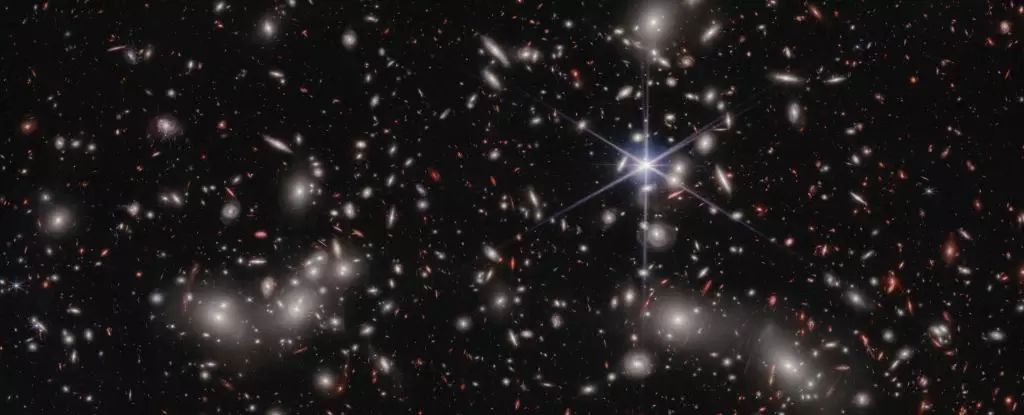The study of the Universe’s evolutionary history has taken a fascinating leap forward, with groundbreaking insights into the conditions following the Big Bang. The advent of advanced astronomical instruments, including the Hubble and James Webb Space Telescopes, has shed light on the origins of ionizing photons that heralded the illumination of the early Universe. This piece of cosmic history, unveiled in a recent publication, emphatically points to small dwarf galaxies as pivotal contributors to cosmic reionization, challenging previous assumptions regarding their significance.
In the aftermath of the Big Bang, the Universe was engulfed in an incomprehensible shroud of hot, dense ionized plasma. Light generated during this era was trapped within, as photons collided with free electrons, perpetuating a bleak and dark cosmos. However, around 300,000 years post-Big Bang, a transformative event occurred: protons and electrons began to coalesce to form neutral hydrogen and helium gas. This transition was crucial, allowing certain wavelengths of light to penetrate the newly formed medium. Alas, the dearth of luminous objects, which could provide the necessary light, managed to keep the Universe shrouded in obscurity.
The emergence of the first stars marked a significant turning point. These celestial bodies radiated energy that effectively stripped electrons from their atomic nuclei, a process known as reionization. As the Universe continued to expand, the gas became increasingly diffuse, thus allowing light to escape freely. By approximately one billion years after the Big Bang, cosmic dawn had culminated in a fully reionized Universe, marking the end of a long, dark chapter in cosmic history.
For decades, scientists have hypothesized that the clearing of the cosmic fog was primarily facilitated by relatively massive entities, such as supermassive black holes or expansive galaxies in vigorous star formation epochs. However, observations made using the JWST have offered a surprising revelation: dwarf galaxies, often overlooked due to their small stature, play a more significant role than previously recognized. This paradigm shift raises critical questions about the factors that shaped our early Universe.
An international research collaboration, spearheaded by astrophysicist Hakim Atek of the Institut d’Astrophysique de Paris, focused their inquiry on a galaxy cluster known as Abell 2744. This cluster’s extreme density permitted gravitational lensing, a phenomenon that magnifies light from distant sources, providing researchers a unique opportunity to observe early dwarf galaxies. Detailed spectral analyses yielded remarkable findings: these diminutive galaxies outnumber their larger counterparts by an astounding ratio of 100 to 1 and produce a collective output of ionizing radiation that far exceeds previous estimates.
According to Atek, these minuscule cosmic entities, with their prolific energy emissions, are capable of executing reionization on a grand scale. Their overwhelming abundance during this formative period was so impactful that it suggests a transformative influence over the Universe as we know it today. Atek’s assertion that “these cosmic powerhouses collectively emit more than enough energy to get the job done” encapsulates the essence of this groundbreaking discovery.
While this exploration of Abell 2744 has uncovered monumental strides in understanding cosmic reionization, it is but a single glimpse into a vast and largely uncharted territory. The need for extensive validation and broader sampling is paramount. The study of just one patch of the sky prompts researchers to question whether the dwarf galaxies they observed are representative of the entire early galactic population.
The team intends to broaden their research horizon by investigating other cosmic lens regions, seeking to ensure that their findings are not an anomaly. Expanding the scope of this research will be vital for producing a cohesive understanding of the role that low-mass galaxies played in the cosmic reionization epoch.
As we stand on the threshold of new discoveries with the JWST and other emerging technologies, the potential for revolutionary insights into the early Universe seems boundless. The ongoing quest for clarity regarding reionization could reshape our understanding of cosmic history profoundly. As astrophysicist Themiya Nanayakkara wisely states, “We have now entered uncharted territory.” This declaration not only signifies the current state of astronomical research but also serves as a prelude to the exhilarating discoveries that lie ahead.


Leave a Reply